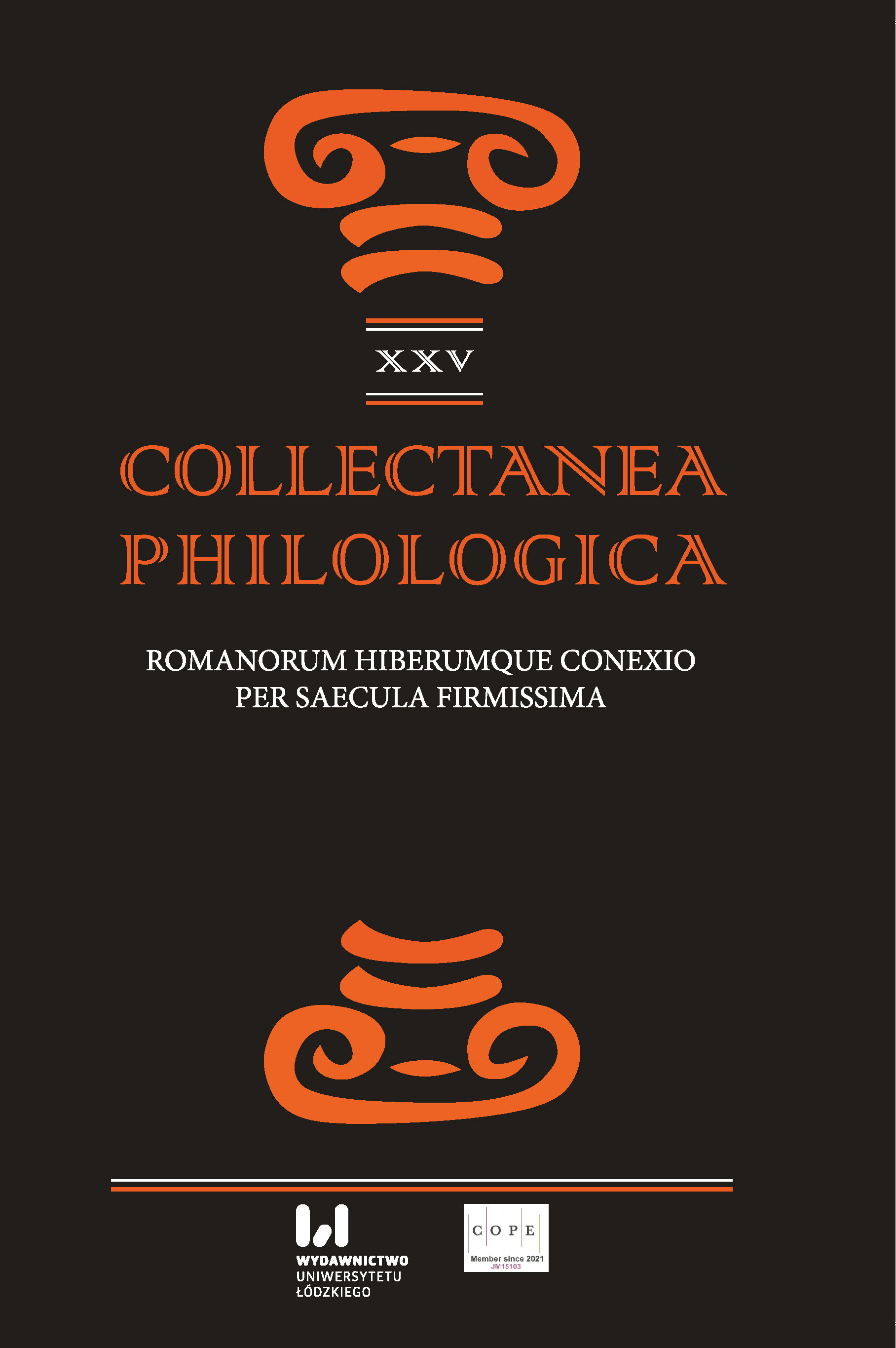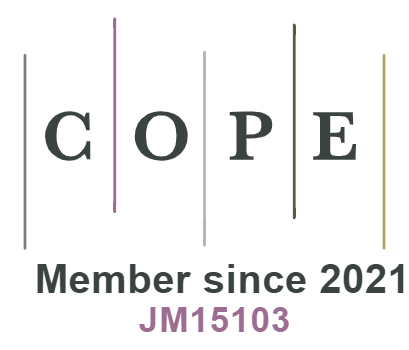Movilidad y redes de influencia de los seviros Augustales en Baetica
DOI:
https://doi.org/10.18778/1733-0319.25.13Słowa kluczowe:
seviri Augustales, wyzwoleńcy w Rzymie, mobilność geograficzna, epigrafika łacińska, Betyka, wczesne cesarstwo rzymskieAbstrakt
The seviratus Augustalis was an urban institution of semi-official nature which was mainly held by wealthy freedmen. It appeared in Italy in the end of the 1st century BC and spread fast to the Latin-speaking provinces of the Roman Empire. It had an essential role in the growth of the economic and commercial activities of several cities till the 3rd century AD. This position has been studied by many scholars through its abundant epigraphic evidences. The scarcity of mentions to the seviri Augustales in the Roman literature has impeded the elucidation of its concrete functions. It has clear similarities with some priesthoods and urban magistratures, but the seviri Augustales lacked the status and the official nature of them. This unofficial essence was the point which made possible the development of the seviratus Augustalis as a tool for the social promotion of rich freedmen, whose admission to magistratures and priesthoods was forbidden.
The goal of the current analysis is to identify the economic and institutional connections between the seviri Augustales of Baetica, both inside and outside this Hispanic province. The preserved epigraphic evidence illustrates the diffusion of this institution in the south of Roman Hispania and the importance of the economic route through the course of the Guadalquivir River, as well as the commercial contacts between diverse coastal cities of Hispania and other Roman regions.
Funding: Este artículo se ha realizado en el marco del proyecto de investigación HAR2017-84711-P del Ministerio de Economía y Competitividad del Gobierno de España. Asimismo, resultó de gran utilidad para su elaboración la estancia de investigación realizada en la Fondation Hardt pour l’étude de l’antiquité classique, ubicada en la ciudad de Ginebra (Suiza).
Bibliografia
Abramenko, A. (1993). Die munizipale Mittelschicht im kaiserzeitlichen Italien. Zu einem neuen Verständnis von Sevirat und Augustalität. Francfort: Lang.
Google Scholar
Arnaldi, A. (2006). “Il culto delle divinità Augustae e i seviri nella documentazione epigrafica della Mauretania Tingitana”. L’Africa Romana 16. 1695–1705.
Google Scholar
Barrón Ruiz de la Cuesta, A. (2020). Los seviros augustales en Hispania y las Galias. Una aproximación a la movilidad social en el Imperio romano. Logroño: Universidad de La Rioja.
Google Scholar
Blázquez Martínez, J.M. (2007). “Inscripciones de olearii en Hispalis”. En: M. Mayer Olivé, G. Baratta, A. Guzmán Almagro (coords.). Provinciae Imperii Romani inscriptionibus descriptae (Barcelona, 3–8 septembris 2002): Acta. Vol. 1. Barcelona: Institut d’Estudis Catalans. 179–184.
Google Scholar
Chic García, G. (1981). “Rutas comerciales de las ánforas olearias hispanas en el Occidente romano”. Habis 12. 223–250.
Google Scholar
Chic García, G. (1986). “El comercio del aceite de la Astigi romana”. Habis 17: 243–264. http://dx.doi.org/10.12795/Habis.1986.i17.19
Google Scholar
Chic García, G. (1990). La navegación por el Guadalquivir entre Córdoba y Sevilla en época romana. Écija: Sol.
Google Scholar
Chic García, G. (1992). “Los Aelii en la producción y difusión del aceite bético”. Marburger Beiträge zur antiken Handels 11. 1–22.
Google Scholar
Chic García, G. (2006). Movimiento de personas en relación con el aceite Bético. En: A. Caballos Rufino, S. Demougin (eds.). Migrare. La formation des élites dans l’Hispanie romaine. Burdeos: Ausonius. 273–293.
Google Scholar
DOI: https://doi.org/10.4000/books.ausonius.7617
Delamarre, X. (2007). Nomina Celtica antiqua selecta inscriptionum. Noms de personnes celtiques dans l’épigraphie classique. París.
Google Scholar
Duthoy, R. (1978). Les Augustales. En: H. Temporini, W. Hasse (eds.). Aufstieg und Niedergang der Romischen Welt: Geschichte und Kultur Roms im Spiegel der neueren Forschung, II. Principat, 16, 2. Berlín, Nueva York: De Gruyter. 1254–1309.
Google Scholar
Egger, A.E. (1844). Recherches sur les Augustales. Suivies des fragments du testament politique d’Auguste. París.
Google Scholar
Garrote Sayó, E. (2003). Los puertos de Narbo Martius y Arelate y su relación con los circuitos comerciales del aceite bético. En: G. Pascual Berlanga, J. Pérez Ballester (coords.). Puertos fluviales antiguos. Ciudad, desarrollo e infraestructuras. Valencia: Universitat de Valencia. 227–235.
Google Scholar
Gozalbes Cravioto, E. (2006). “Documentos epigráficos acerca de las relaciones entre Hispania y Mauretania Tingitana”. L’Africa Romana 16. 1337–1349. https://doi.org/10.5209/geri.80352
Google Scholar
DOI: https://doi.org/10.5209/geri.80352
Haley, E.W. (1990). “The Fish Sauce Trader L. Iunius Puteolanus”. Zeitschrift für Papyrologie und Epigraphik 80: 72–78.
Google Scholar
Kajanto, I. (1965). The Latin Cognomina. Helsinki: Societas scientiarum Fennica.
Google Scholar
Laird, M.L. (2015). Civic Monuments and the Augustales in Roman Italy. Nueva York: Cambridge University Press.
Google Scholar
DOI: https://doi.org/10.1017/CBO9781139051767
MacMullen, R. (1982). “The Epigraphic Habit in the Roman Empire”. American Journal of Philology 103. 233–246.
Google Scholar
DOI: https://doi.org/10.2307/294470
Melchor Gil, E. (1994). El mecenazgo cívico en la Bética. La contribución de los evergetas a la vida municipal. Córdoba: Instituto de Historia de Andalucía – Universidad de Córdoba.
Google Scholar
Melchor Gil, E. (2002). La navegación por el Guadalquivir en época Antigua y Medieval. En: Patrimonio Histórico Hidráulico de la Cuenca del Guadalquivir. Madrid: Ministerio de Medio Ambiente – Confederación Hidrográfica del Guadalquivir. 319–347.
Google Scholar
Melchor Gil, E. (2006). “Corduba, caput provinciae y foco de atracción para las élites locales de la Hispania Ulterior Baetica”. Gerión 24. 251–279.
Google Scholar
Melchor Gil, E. (2008–2009). “El Baetis y la organización viaria del sur peninsular: la interconexión de las redes de transporte fluvial y terrestre en la Bética romana”. Anas 21–22. 163–191.
Google Scholar
Melchor Gil, E. (2011). Élites supralocales en la Bética: entre la civitas y la provincia. En: A. Caballos Rufino (coord.). Roma generadora de identidades: la experiencia hispánica. Sevilla: Casa de Velázquez – Universidad de Sevilla. 267–300.
Google Scholar
Meyer, E.A. (1990). “Explaining the Epigraphic Habit in the Roman Empire: The Evidence of Epitaphs”. Journal of Roman Studies 80. 74–96.
Google Scholar
DOI: https://doi.org/10.2307/300281
Morales Rodríguez, E.M. (2012). “Riflessioni sull’augustalità in Mauritania Tingitana. Le dediche ob honorem seviratus”. L’Africa Romana 19. 2061–2071.
Google Scholar
Mouritsen, H. (2006). “Honores Libertini: Augustales and Seviri in Italy”. Hephaistos 24. 237–248.
Google Scholar
Mourlot, F. (1895). Essai sur l’Histoire de l’augustalité dans l’Empire Romain. París: Libraire Émile Bouillon.
Google Scholar
Mrozek, S. (1972). “Les bénéficiaires des distributions privées d’argent et de nourriture dans les villes italiennes à l’époque de Haut Empire”, Epigraphica, 34. 30–54.
Google Scholar
Mrozek, S. (1973). “À propos de la répartition chronologique des inscriptions latines dans le Haut-Empire”. Epigraphica 35. 113–118.
Google Scholar
Mrozek, S. (1988). “À propos de la répartition chronologique des inscriptions latines dans le Haut-Empire”. Epigraphica 50. 61–64.
Google Scholar
Nock, A.D. (1934). “Seviri and Augustales”. Annuaire de l’Institut de Philologie et d’Histoire Orientales et Slaves (Mélanges Bidez) 2. 627–638.
Google Scholar
Oliver, J.H. (1958). “Gerusiae and Augustales”. Historia. Zeitschrift für Alte Geschichte 7. 472–496.
Google Scholar
Remesal Rodríguez, J. (2000). L. Marius Phoebus mercator olei hispani ex provincia Baetica. Consideraciones en torno a los términos mercator, negotiator y diffusor olearius ex Baetica. En: C. Paci (ed.). Epigraphai. Miscellanea epigrafica in onore di Lidio Gasperini. Roma: Tipigraf. 781–797.
Google Scholar
Remesal Rodríguez, J. (2008). Olearii. En: M.L. Caldelli, G.L. Gregori, S. Orlandi (eds.). Epigrafia 2006. Roma: Tipografia Vaticana. 350–373.
Google Scholar
Rico, C. (2003). “Mercatores, negotiatores et diffusores olearii et le commerce de l’huile de Bétique à destination de Rome aux I et II siècles de notre ère”. Revue des Études Anciennes 105. 413–433.
Google Scholar
DOI: https://doi.org/10.3406/rea.2003.5667
Rodríguez Neila, J.F. (2006). “Epula y cenae públicos financiados por las ciudades romanas”. Cahiers du Centre Gustave Glotz 1. 123–142. https://doi.org/10.3406/ccgg.2006.904
Google Scholar
DOI: https://doi.org/10.3406/ccgg.2006.904
Serrano Delgado, J.M. (1988). Status y promoción social de los libertos en la España romana. Sevilla: Universidad de Sevilla.
Google Scholar
Solin, H. (1982). Die griechischen Personennamen in Rom. Ein Namenbuch (3 vols.). Berlín, Nueva York: De Gruyter.
Google Scholar
Taylor, L.R. (1914). “The Augustales, Seviri Augustales and Seviri: a Chronological Study”. Transactions and Proceedings of the American Philological Association 45. 231–253.
Google Scholar
DOI: https://doi.org/10.2307/282694
Taylor, L.R. (1924). “Seuiri Equitum Romanorum and Municipal Seuiri: A Study in Pre-Military Training among the Romans”. Journal of Roman Studies 14. 158–171.
Google Scholar
DOI: https://doi.org/10.2307/296331
Vandevoorde, L. (2015). “Of Mice and Men. Financial and Occupational Differentiation among *Augustales”. Cahiers Mondes Anciens 7. 2–24. https://doi.org/10.4000/mondesanciens.1534
Google Scholar
DOI: https://doi.org/10.4000/mondesanciens.1534
Van Haeperen, F. (2016). “Origine et fonctions des augustales (12 av. n.è.–37). Nouvelles hypothèses”. L’Antiquité Classique 85. 127–155. https://doi.org/10.3406/antiq.2016.3886
Google Scholar
DOI: https://doi.org/10.3406/antiq.2016.3886
Vaquerizo Gil, D. (2008). Ad ripam Baetis: Corduba/Colonia Patricia, simulacrum Romae. En: J. Rubiales Torrejón (ed.). El Río Guadalquivir. Sevilla: Junta de Andalucía. 185–195.
Google Scholar
Von Premerstein, A. (1895). Augustales. En: E. De Ruggiero (ed.). Dizionario epigrafico di antichità romane, I. Roma: L. Pasqualucci. 824–877.
Google Scholar
Opublikowane
Jak cytować
Numer
Dział
Licencja

Utwór dostępny jest na licencji Creative Commons Uznanie autorstwa – Użycie niekomercyjne – Bez utworów zależnych 4.0 Międzynarodowe.
Funding data
-
Ministerio de Economía y Competitividad
Grant numbers HAR2017-84711-P












